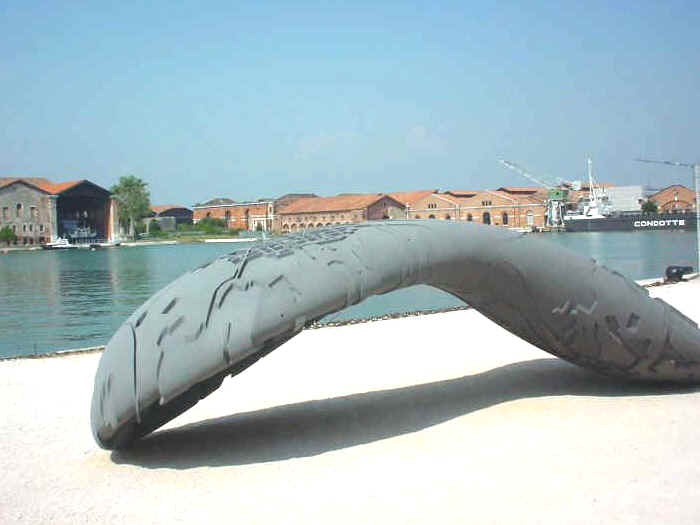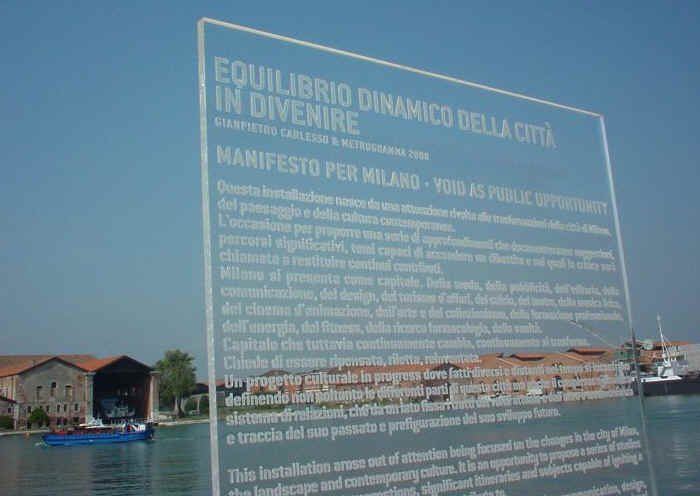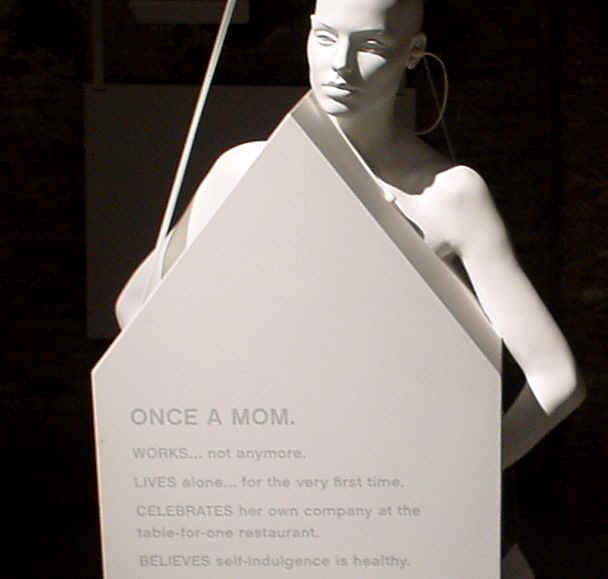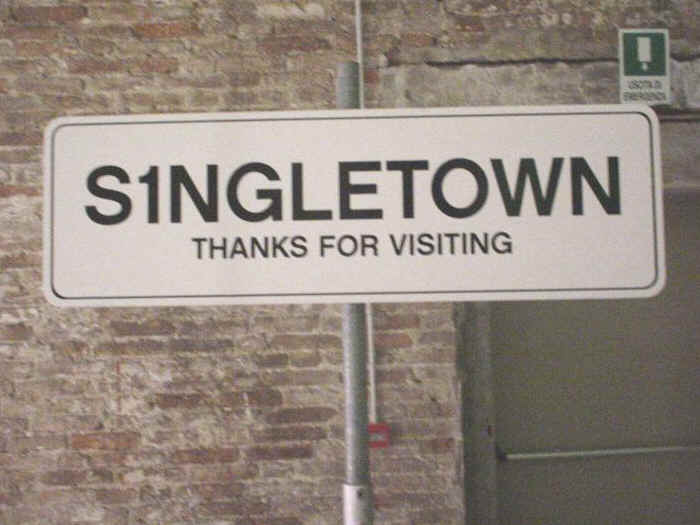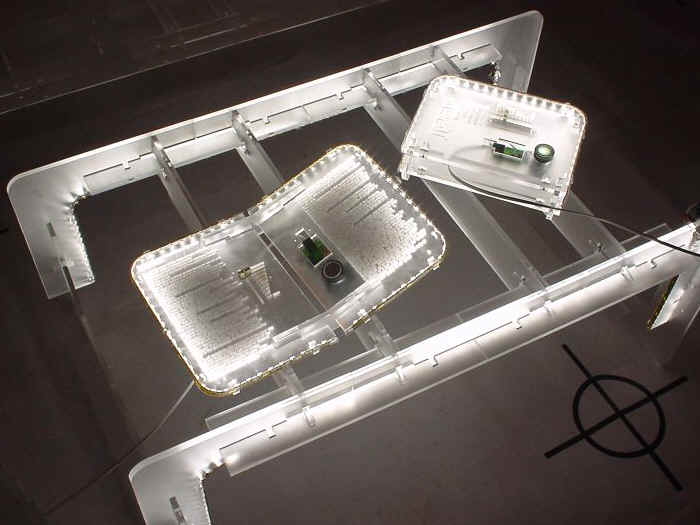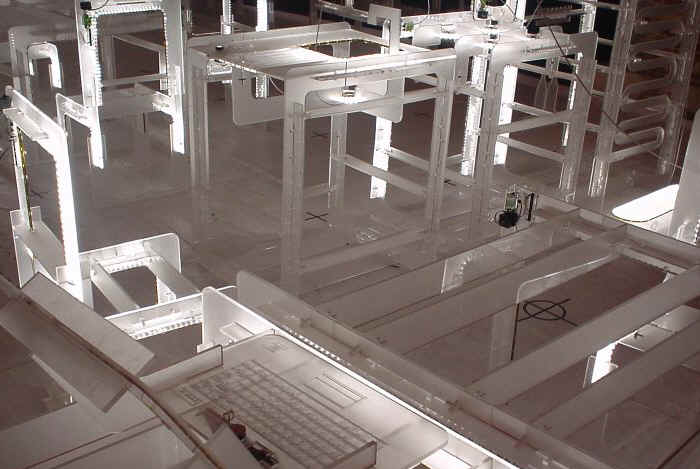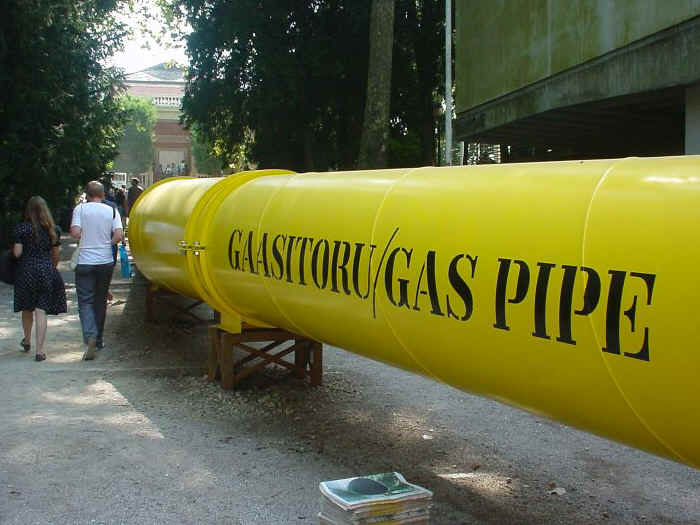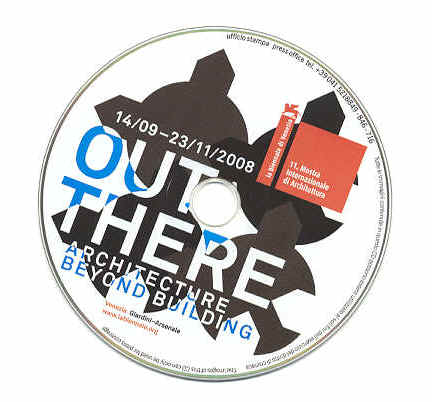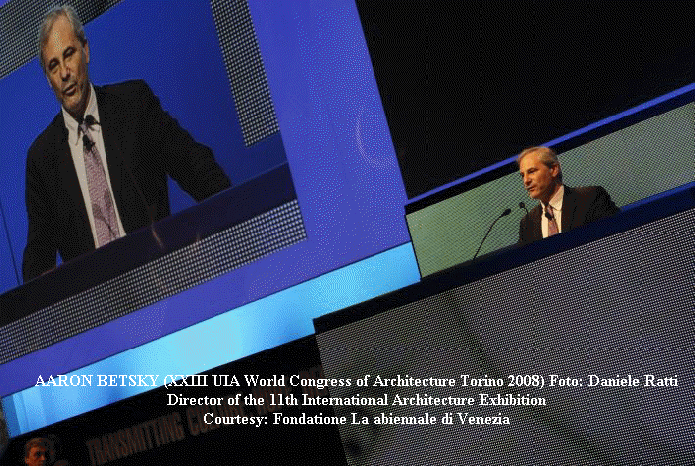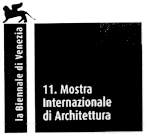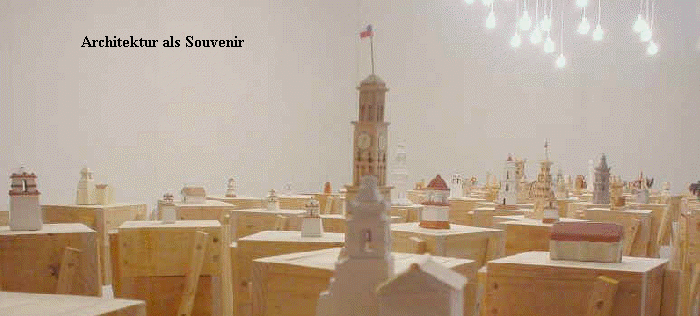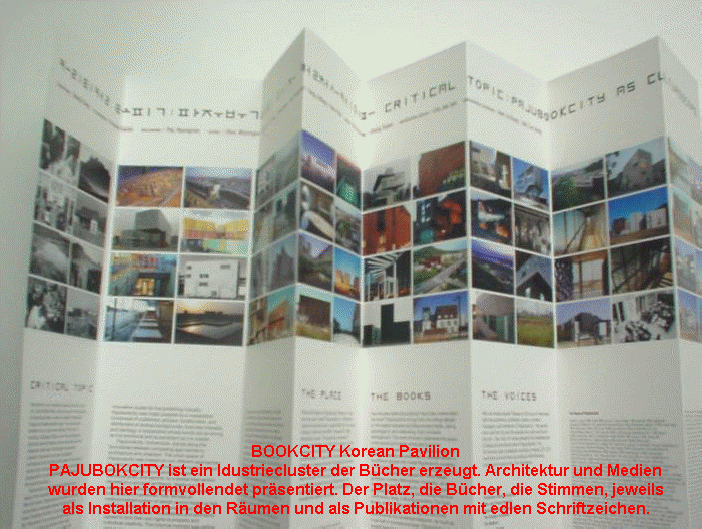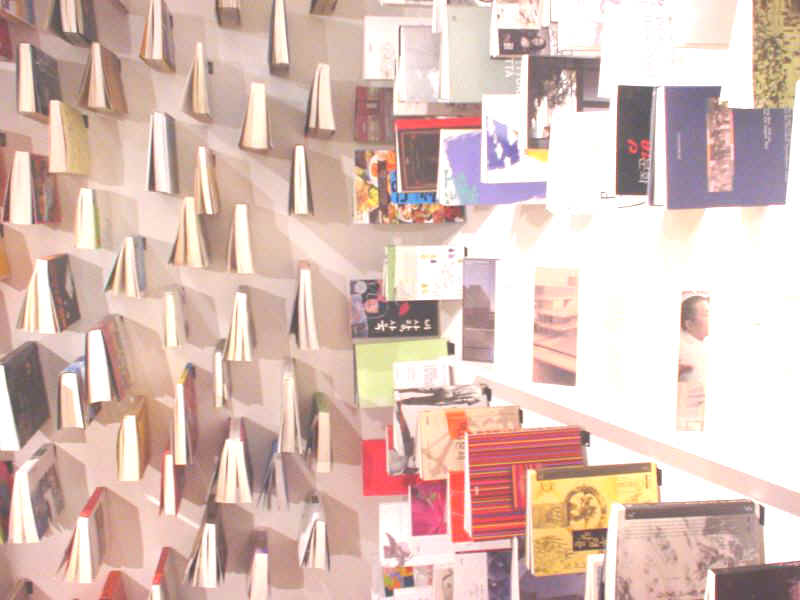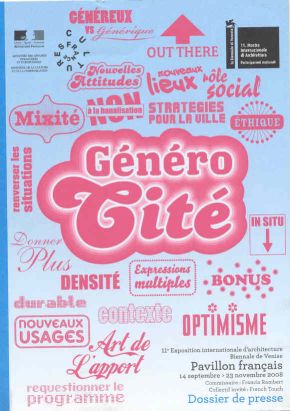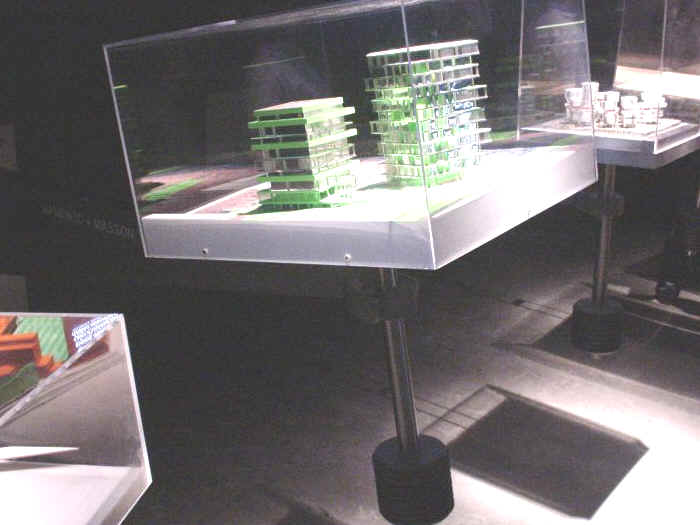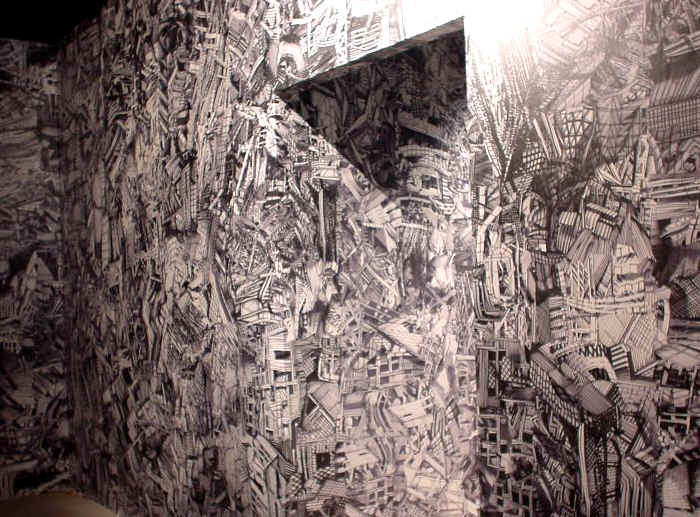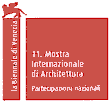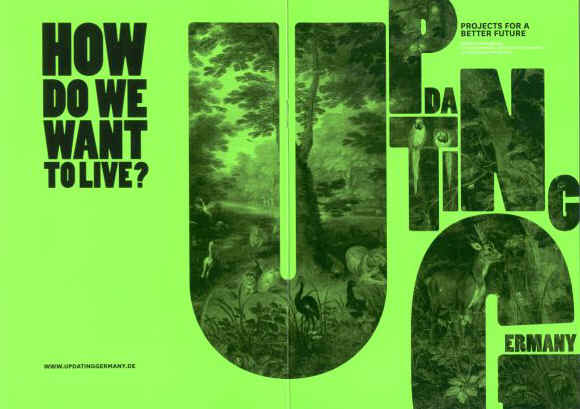|
Die Architekturbiennale verzichtet keineswegs auf optisch anspruchsvolle Statements, ob sie sich nun skulptural, als Plan, als freies Kunstwerk, als Installation, als Textarchitektur darstellen, daneben rückt man aber nahe an die Facts heran und bietet Ausblicke an, wie man das auseinanderdriften von teurer Spitzenarchitektur für Reiche, die damit auch noch reicher werden, und den Ansprüchen einer lebenswerten Welt für eine Mehrheit an Bewohnern gerecht werden könnte.
Auf dieser Biennale gibt es keinen Krieg zwischen technischen Lösungen und ideellen, verschiedenste Möglichkeiten werden angedacht, als Modelle präsentiert.
Wodurch Umwelt heute strukturiert und korrumpiert wird, sprechen diverse Anbieter an und aus. Die Architektur der Infrastruktur: ESTONIA WWW.SALTO.EE
Aaron Betsky konnte halten was er vor der Biennale versprochen hat, er konnte offenbar motivieren, denn auch viele Länderbeiträge sind offen und freimütig eingestiegen und haben nicht primär auf Eigenwerbung geschaltet.
La Biennale di Venezia Statement by Paolo Baratta Right from the first meeting with Aaron
Betsky to talk about the Biennale last December, I asked the usual
question: "What should an architecture exhibition, an architecture
Biennale, be ?" Aaron Betsky' s answer is visible in this 11 th International Architecture Exhibition, that expands the field of architecture, challenging a more restricted, normal, predictable definition of it, widening its perspective and its range of interest. This exhibition seems opportune. It takes place at a time when disapproval of the works of " architects" and their clients is more and more widespread, also in public opinion; they are desired but alien works, especially those announced with the triumphant communicative optimism of economic entities and political institutions. It seems a warning about the easy use of miraculous solutions that computer technology and new materials offer to tempt the new sorcerers' apprentices, be they designers or c1ients. Aaron Betsky brings us back to the life of man in the space he inhabits. And he calls on all the creative faculties that help to form and nourish architecture in this wider meaning to gather. It is worth recalling that this message is not meant only for the ranks of architects, there is a meaning here for us all. There is a call to a more complete modern humanism: man, his life, his places. There is a positive secular message for the diaspora that inhabits the immense areas of the city-non- city: do not lose hope, even if one is a prisoner of the most desolate sprawl. There is an invitation to each one of us to reappropriate inhabited space and to ourselves be capable of visions, and thus capable of expressing the need for architecture in the reality that surrounds us, as individuals, groups and civil society .There is a certain faith in aesthetics and in modem aesthetic education, as premise for abetter society .On the other hand, this is not a rhetorical message of generational rebe1lion. Even the best-known architects are ca1led to this work of renewal, valuing their visionary capacity and experimental commitment. The exhibition is not a theoretical essay or treatise. It is a typical instrument of dialogue with experts and the public, based on images, pathways, representations and its own manner of involvement. The exhibition is itse1f a work, and Aaron Betsky offers it to us. In the same way, the five volumes which make up the catalog are to be read as a single editorial product, capable of articulating the director's vision on paper. It embodies the unriva1led fascination of La Biennale, which invokes both the spirit of research and the curator' s creativity .
Die Zugangsformate sind sehr unterschiedlich, engagiert, aber oft auch sehr gut designt, sie können einen nachhaltigen Diskurs entfachen, der in der Auffassung von Welt nicht unbeachtet bleiben kann.
Im französischen Pavilion spiegelt sich auf der Höhe der Zeit, das Faktum dass hier diverse Stadtteile kreiert wurden, probiert wurden. Es ist schon etwas populistisch, wenn die Fehler nur beim Angebot gesucht werden, schließlich halten eingefleischte Traditionen oft auch davor zurück, Angebote sinnvoll zu nützen. Vorwärts, zurück in die Steinzeit funktioniert einfach nicht. Sehr sinnfällig und attraktiv sind die ausgestellten Modellsituationen, die man selbst bewegen kann zur besseren Einsicht und die flirrenden Datenprojektionen im Hauptraum treffen das Zeitgefühl und dessen Problematik.
Passagen, die man dem Feld "Bildende Kunst" zuordnen könnte, wechseln mit nackten Daten.
BRITISH
'Anyone in England who wants a house with a few large rooms will find that such houses no longer exist among ordinary houses; only those who are fortunate enough to be able to acquire an old house will be able to find what they want. Rooms of an agreeable -though to our eyes still a modest -size, measuring say, 5 to 5~ metres, will be found only in houses of at least twelve reception rooms and bedrooms. Not only does the small house have tiny little rooms but these are also firmly shut off from one another, like the large rooms of the larger house, thus presenting a row of comfortless little cages'. Hermann Muthesius, Das Englische Haus, 1904 Nearly 3m rooms have disappeared in the past 5 years as UK homeowners knack down walls tc create open plan space An estirnated 2.9m roorns have been rnerged, while a further 2.1 m hornes willlose a room in 2008. The dining roorn, predicted to disappear by 2020, is the first to go, followed by the living roorn, then utility roorns In 2006/07, 47 per cent of new dwellings completed in England were flats, compared with 16 per cent in 1996/97 Between 1981 and 2006, the number cf awner-accupied dwellings in the UK increased by 49 per cent ta reach 18.5m Between 1995 and 2007 the average density of new homes built in England increased from 24 to 45 per hectare. The increase was particularly large in London where the density of newly built homes between 1995 and 2005 doubled from 48 to 100 per hectare The UK Gavernrnent plans ta build 3m new harnes by 2020 It is predicted that by 2029, the number of one person households will have risen from 6.5m to just under 10.5m Over the last 10 years house prices in Estonia have risen by 432 per cent, compared to on I y 3 per cent in Germany. The UK ranks forth highest in order of percentage change, with prices rising by 185 per cent Source: Office tor National Statistics (www.ons.aov.uk) & Communities and Local Government (www.communities.aov.uk) Ten most expensive homes in Europe: 1) La Lsopolda, Francs: 312million suros 2) Aditya Mittal Residence, Kensington Palace Gardens, London: 146million euros 3) Penthouse, 8 St James's Square, London: 143million euros 4) Penthouse, 1 Hyde Park, London: 125 million euros 5) 17 Upper Phillimore Gardens, London: 100million euros 6) Updown Court, Windlesharn, UK: 93rnillion euros 7) Vanisha Mittal Residence, London, UK: 87million euros 8) Lakshmi Mittal Residence, Kensington Palace Gardens , London: 71 million euros 9) Toprack Mansion, London: 62million euros 10) Wittanhurst Hause, Landan: 37millian euras
Der Deutsche Pavilion war der Frage gewidmet: Wie wollen wir leben? Unter den multiplen Ansätzen zu "Updating Germany" sticht eine Publikation der Berliner Gruppe RAUMTAKTIK hervor, Friedrich von Borries, Matthias Böttger, Florian Heilmeyer beschäftigen sich mit den Produktionsbedingungen von Raum, nachzulesen in: Bessere Zukunft? Merve Verlag Berlin |
